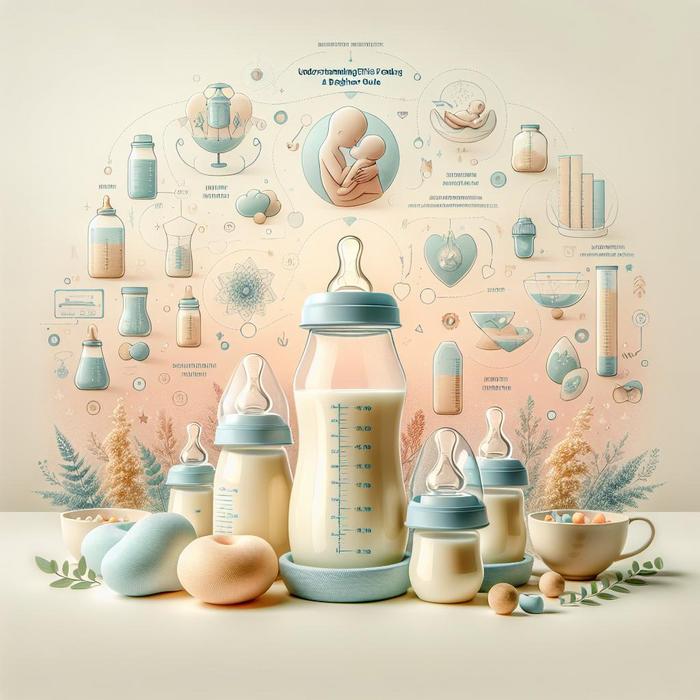Choosing Biomimetic Feeding Brands: The Best Options For Your Baby
As you step into the world of parenthood, company names such as Nanobébé, Comotomo, Tommee Tippee, and Philips Avent probably gloss over your eyes like a foreign language. These brands offer a range of products to assist you in the journey of infant nutrition. But today, we’ll cast a spotlight on their range of biomimetic feeding bottles – a concept that has revolutionized the baby feeding industry and gained immense popularity among new parents.
What Is Biomimetic Feeding?
Biomimetic feeding refers to the way in which certain baby bottles are designed to closely mimic the natural breastfeeding process. This approach aims to make bottle feeding more natural, comfortable, and less confusing for your baby. You can read more about it here.
Biomimetic Brands To Consider
When it comes to brands that cater specifically to biomimetic feeding, there are several great options that standout:
- Nanobébé: They offer products designed to preserve breast milk nutrients with ergonomic shapes that resemble a mother’s breast.
- Comotomo: Known for their soft, skin-like silicone baby bottles, Comotomo aims to mimic the breastfeeding process to reduce bottle rejection and nipple confusion.
- Tommee Tippee: Their Closer to Nature bottles are created to simulate the natural flex, stretch, and movement of a mother’s breast. For more detailed information about their range, click here.
- Philips Avent: This trusted brand provides baby bottles with wide, breast-shaped nipples to promote a natural latch similar to the breast.
Non-Biomimetic Feeding Brands
While other brands may offer quality feeding solutions, they may not necessarily focus on the biomimetic approach. Brands like Dr. Brown’s, MAM Baby, Medela, Lansinoh, Playtex Baby, and NUK have their unique features and benefits, but do not strictly fall under the biomimetic feeding category. It’s essential to understand the differences and select products that best cater to your baby’s needs and comfort.
Embracing Biomimetic Feeding
I remember when I first transitioned my daughter from breastfeeding to bottle feeding. The change was a huge adjustment for her, and I wished I knew about biomimetic feeding at that time. The transition may have been smoother, and I could’ve avoided those stressful moments of her rejecting the bottle.
As parents, we are always seeking the best for our babies. We want to ensure that they are comfortable and well-nourished at all times. Embracing biomimetic feeding can provide these, making the feeding process more seamless and less intimidating for your little one.
Remember, there’s no one-size-fits-all in parenting or baby feeding. It’s all about finding what works best for you and your baby. For some, it might be the biomimetic feeding approach, while for others, it could be a different method altogether. The same goes for choosing the right brand. Comotomo, for example, has worked wonders for some parents, while others swear by Philips Avent or Nanobébé.
Biomimetic Feeding and Infant Nutrition
Just as biomimetic feeding aims to enhance comfort for your baby, it also plays a crucial role in their nutrition. By mimicking the natural breastfeeding process, it ensures that your baby is feeding correctly and receiving the necessary nutrients. Here’s an interesting read about the importance of early nutrition in infants.
Whether you’re breastfeeding, formula feeding, or using a combination of both, it’s essential to make informed decisions and find the feeding method that fits your baby’s needs. Rest assured, as long as your little one is fed, loved, and nurtured, you’re doing an incredible job!
The value of incorporating biomimetic feeding into your infant’s diet cannot be understated. Not only does it offer a more natural feeding choice, but it also encourages proper and balanced nutrition. Exploring different brands that champion this innovative approach, like Nanobébé, Comotomo, Tommee Tippee, and Philips Avent, could be a game-changer.
Through my own evolution as a parent, I have discovered the profound impact of biomimetic feeding. I came upon the concept while navigating through copious amounts of online mom-forums and countless hours of research. For me, it wasn’t just about feeding my baby – it was about giving him the very best I could afford. These particular brands stood out, each demonstrating a genuine commitment towards mimicking the natural breastfeeding process. Recall that the key aspect of biomimetic feeding is its unique ability to imitate the shape and functionality of a mother’s breast. My own effects might resonate with quite a lot of new parents exploring alternative feeding methods.
The Advantages of Biomimetic Feeding
One of the substantial advantages of switching to biomimetic feeding is its impact on the baby’s oral muscles. The research provided by ScienceDirect describes it in detail. The baby’s need to suck, chew, and swallow is vital for their oral muscle development, and biomimetic feeding offers similar contours as breastfeeding. This helps promote normal oral development.
Another advantage is the avoidance of nipple confusion. Nipple confusion typically arises when a baby transitions between breastfeeding and regular feeding bottles. They might get confused about how to latch onto different nipples effectively. With bottles designed to mirror the shape of the natural breast, this confusion is minimized, making the transitions between breastfeeding and bottle-feeding easier for both the baby and the parents.
My Experience with Biomimetic Feeding
My journey towards embracing biomimetic feeding was not just fuelled by growing trends or testimonials but also my quest to root out the best for my baby. Back when my second child came around, and I was determined to try biomimetic feeding – the results were astounding.
The switch was not immediate; it did entail patience and some trial and error. I first tried Nanobébé; their bottles promised to protect breastmilk nutrients, and the ergonomic design was a hit with my little one. Later, I gave Comotomo a spin, and their bottles indeed lived up to their claims of being soft and skin-like. The transition was smoother, and the rejection rate dipped significantly, validating my decision.
There Is More to Biomimetic Feeding
With all the benefits biomimetic feeding offers, it’s essential not to forget that each baby is unique, and what might work for one might not necessarily be the best for another. My advice to you, dear reader, based on both research and personal experiences, is to explore, experiment, and observe. Trust and understand your baby’s preferences, and you’ll eventually hit upon the ideal feeding method and brand.
Biomimetic feeding significantly contributes to a child’s nutrition and growth (mdpi). Brands focusing on this approach prioritize the baby’s comfort, and in doing so, greatly enhance their unique feeding experience. Whether you choose to breastfeed, formula feed, or a combination of both, let it be a well-informed choice. The perks of biomimetic feeding are aplenty, but remember, it’s essential to weave it seamlessly and comfortably into your baby’s routine.






